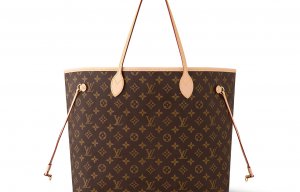
Louis Vuitton tops the luxury goods counterfeiting charts
The report of the Office for Harmonization in the Internal Market demonstrates that annually the industry loses more than EUR 26 billion of revenue.

23rd July 2015
Innovation in Textiles
|
Brussels
A new report by the Office for Harmonisation in the Internal Market (OHMI) on the economic cost of IPR infringement in the clothing, footwear and accessory sector has revealed that annually the industry loses more than EUR 26 billion of revenue, which leads to approximately 500,000 jobs lost.
For many years now, the textile and clothing industry represented by Euratex, the European Apparel and Textile Confederation, has been alerting the EU institutions and the national authorities about the disastrous consequences of counterfeiting and piracy for our industry and for the whole European economy.
The report of the Office for Harmonization in the Internal Market (OHMI) demonstrates that the costs of IPR infringement borne by the European economy in terms of job losses, loss of profit and even, in some cases, closures of SMEs are very high.
According to Euratex, the report proves that 9.7% of sales are being lost by the sector due to counterfeiting, leading to EUR 26.3 billion of revenue lost annually by the sector. This also results in EUR 17 billion of sales lost in related sectors, the organisation says.
"Another major effect that counterfeiting has is on labour force, with 363,000 direct jobs being lost as a result of the illegal practise. This also leads to 518,281 direct and indirect jobs lost altogether, as well as EUR 8.1 billion of government revenue lost, which is represented through social contributions and taxes," Euratex adds.
To overcome the challenges facing the textiles and clothing industry, Euratex urges the EU to take concrete actions as regards the three essential aspects of the fight against counterfeiting and piracy.
The first is to combat the phenomenon within the boundaries of the EU; secondly, appropriate steps need to be taken to ensure that imported counterfeit textiles and clothing are intercepted and perpetrators are brought to justice.
And the lastly, exporters of European products to third countries need assurances that their designs will enjoy all necessary protection in the markets of those countries as required by the WTO TRIPs agreement (Article 25.2). This agreement makes specific reference to the protection of textile designs and models: “Each Member shall ensure that requirements for securing protection for textile designs, in particular in regard to any cost, examination or publication, do not unreasonably impair the opportunity to seek and obtain such protection. Members shall be free to meet this obligation through industrial design law or through copyright law”.

Business intelligence for the fibre, textiles and apparel industries: technologies, innovations, markets, investments, trade policy, sourcing, strategy...
Find out more